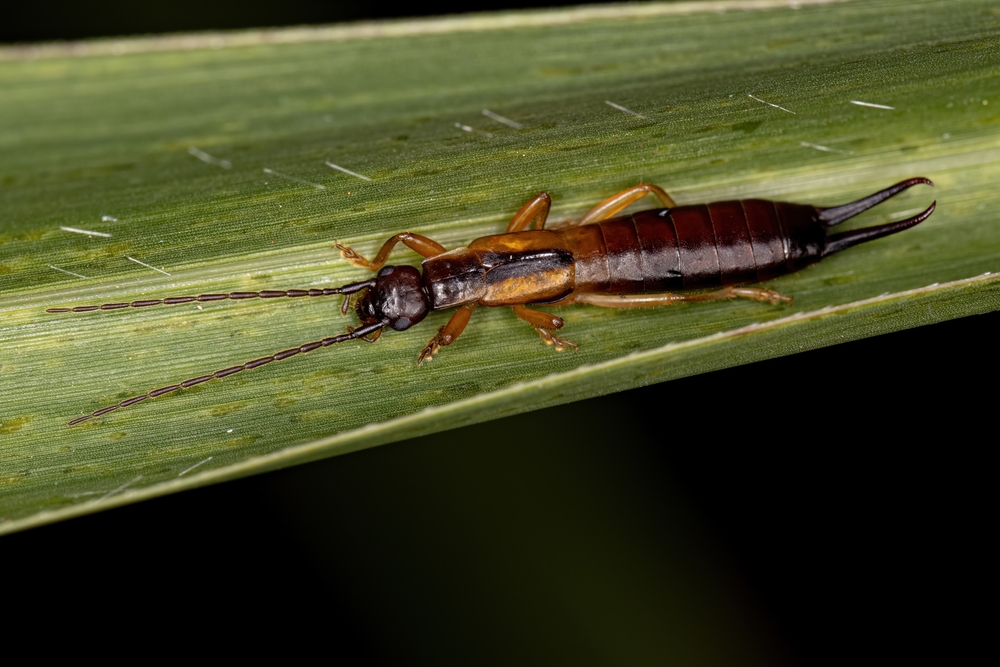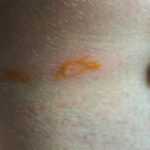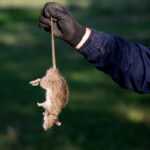Pincher Bug Guide: Tips and Tricks for Controlling These Pests
Pincher bugs, or earwigs, are insects with pincers on their abdomens that thrive in damp environments such as under rocks, logs, or inside houses. Many earwigs, including pincher bugs, hide in these moisture-rich areas and can become a nuisance in homes and gardens. This guide covers everything you need to know about these pests, including control methods for pincher bugs and effective management strategies.
- Pincher bugs, or earwigs, are harmless scavengers that thrive in moist environments and feed on decaying plant materials.
- Early signs of an infestation include increased bug numbers in dark, damp areas and damage to plants and fabrics.
- Prevent infestations by reducing moisture, sealing entry points, and keeping outdoor areas tidy to eliminate hiding spots.
Understanding Pincher Bugs
Pincher bugs, often known as earwigs, are part of the insect order Dermaptera and are recognized by their distinctive pincers. Most species of pincher bugs belong to the Dermaptera order and are found in various habitats worldwide. The name Dermaptera means ‘skin wings’, referring to their thin, often folded wings that are rarely used for flight. With elongated bodies that can range from reddish-brown to dark brown, these insects are nocturnal scavengers that primarily feast on decaying plant material. Earwigs primarily eat decaying plant material.
They thrive in moist environments, hiding under leaf litter, rocks, or decaying wood. Outdoors, earwigs live in mulch, leaves, and other ground cover, and often overwinter under stones, wood piles, or leaf debris. Knowing these basic characteristics helps in managing a pincher bug infestation.
What Are Pincher Bugs?
Pincher bugs, or earwigs, belong to the insect order Dermaptera, which includes over 2,000 species across 12 families. These small insects, usually dark brown, reddish-brown, or black, measure about 1 to 2 inches long and feature prominent pincers on their abdomens.
There is a common myth that pincher bugs crawl into people’s ears and cause harm, but this is not scientifically supported. The name ‘earwig’ comes from old folklore and language, not from any real danger to people’s ears.
Unlike social insects like ants or bees, pincher bugs do not live in colonies and are solitary creatures. Pincher bugs are sometimes called ‘pinching bugs’ because of their pincers, but despite their appearance, they are generally harmless to humans and pets.
Pincher Bug Behavior and Diet
These bugs are nocturnal and prefer the cover of darkness to be active. They are omnivorous scavengers that feed on dead or decaying plant and animal matter, pet food, and human food scraps. Pincher bugs may also prey on other insects when available. During times of high population, they may even target living plant material, especially seedlings and young foliage, such as new plant leaves.
Attracted to lights, pincher bugs often find their way indoors, seeking out damp, cluttered environments that provide both food and shelter.
Common Earwig Species
The European earwig is the most prevalent species in the U.S., first documented in 1907. This species, along with others like the Red-legged and Striped earwigs, is commonly found in Southern California. There are also many earwig species native to the U.S. These European earwigs share similar habits, preferring moist, dark environments and a diet of decaying organic materials. Female earwigs are known to exhibit similar behaviors as well.
Signs of a Pincher Bug Infestation
Spotting an earwig infestation early can save you a lot of headaches. An earwig infestation can be identified by an increase in their numbers, especially in dark, moist areas, and noticeable damage to plants and household fabrics.
These pests thrive in environments with high moisture, easy access to vegetation, and plenty of hiding spots. Pincher bugs may also be found alongside other pests such as ants, silverfish, or spiders, so effective control should address all potential pests. Knowing where to look and what to look for can help you tackle the problem before it gets out of hand.
Where Do Pincher Bugs Live?
Pincher bugs are usually located outdoors. They prefer moist soil, garden beds, and areas with high humidity. Indoors, they seek out damp, cool areas like crawl spaces, unfinished basements, and wet laundry rooms where bugs crawl. Often, they hitch a ride into homes through outdoor items brought inside.
These bugs thrive in moist, shady areas, making such environments their preferred habitat.
How to Spot an Infestation
Detecting a pincher bug infestation involves looking for signs of their activity in moist indoor areas. Pincher bugs are often found near sources of moisture, making regular inspections of damp areas crucial. Maintaining a clean environment is also essential for deterring these pests.
Vigilance and maintaining a tidy environment help to minimize the risk of an infestation.
Are Pincher Bugs Dangerous?
Despite their menacing appearance, scary-looking pincher bugs are not dangerous to humans or pets. Pincher bugs may pinch if they feel threatened, but their pincers rarely break the skin. They do not pose any serious threats, and their bites are typically mild and not known to lead to serious injuries. Pincher bugs can also release a foul-smelling liquid as a defense mechanism, but it is harmless to humans. However, if left uncontrolled, these pests can damage household fabrics and plants.
Understanding the real risks can help you better manage any encounters with these insects.
Can Pincher Bugs Pinch?
Yes, pincher bugs can pinch, but the pressure they apply is usually mild and painless. These pincers are primarily used for warding off enemies and catching prey. While their pinches can be startling, they are not harmful and rarely cause pain.
In general, the effects of a pincher bug pinch on humans are negligible.
Health Risks and Myths
One of the most persistent myths about pincher bugs is that they are attracted to human ears and can eat brains, which is entirely false. These bugs are not venomous, do not have stingers, and do not spread diseases. Their bites are generally harmless, and they present no significant health concerns to humans.
Knowing these facts helps dispel unnecessary fears about pincher bugs.
The Life Cycle of Pincher Bugs
Pincher bugs undergo a simple metamorphosis with three main stages: egg, nymph, and adult, which collectively illustrate the pincher bug life cycle. The lifespan of these bugs often lasts about one year under optimal conditions.
After the eggs hatch, the young earwigs receive continued care from the mother, who protects and nurtures them during their early development.
Knowledge of their life cycle aids in better controlling populations and preventing infestations.
Reproduction and Egg Laying
Mating for pincher bugs usually occurs in the fall and early winter months. A female pincher bug can lay between 20 to 80 insect eggs in a protective cell after mating. The mother will care for the eggs by cleaning and repositioning them as needed until they hatch.
This nurturing behavior ensures the survival of the next generation.
Nymphs and Molting
Nymphs, the immature stages of pincher bugs, will molt about 4 to 6 times before reaching their adult form. This molting process allows them to grow and develop adult characteristics over approximately 40 to 60 days.
Through these stages, nymphs gradually transform into fully developed adults, ready to continue the cycle.
Seasonal Activity of Pincher Bugs
Pincher bugs, also known as earwigs, follow distinct seasonal patterns that can influence the likelihood and severity of pincher bug infestations. By understanding when these bugs are most active and what drives their behavior throughout the year, you can better time your pest control techniques and take steps to get rid of earwigs before they become a bigger problem.
Spring Activity
In the spring, female earwigs emerge from their winter hiding spots, often beneath stones, wood piles, or in heavily thatched lawns. This is when the pincher bug life cycle kicks into high gear—females begin foraging for food like dead or decaying plant material, insect eggs, and other small insects to support their growing nymphs. As temperatures rise, nymphs molt several times, developing into adults. During this period, European earwigs and other common earwig species are especially active in garden beds, potted plants, and areas rich in organic debris and food supplies.
Summer Activity
Summer brings peak activity for many earwig species. Warm, humid conditions and abundant food sources—such as living plants, decaying vegetation, and even dead animal matter—make this the prime season for pincher bug infestations. Earwigs eat a wide variety of plant material and can infest food supplies, compost piles, and other areas where organic debris accumulates. Homeowners may notice more earwigs crawling indoors or around outdoor spaces as they search for moisture and shelter.
Fall and Winter Activity
As fall approaches, earwigs begin to seek out more suitable environments to survive the colder months. They find shelter beneath stones, in wood piles, and within thick layers of decaying plant material. In these protected spots, they continue to feed on organic debris and small insects, but their activity gradually slows as temperatures drop. The pincher bug life cycle also decelerates, with fewer nymphs molting and less visible movement overall.
During winter, most earwigs—including the European earwig—become dormant, especially in colder climates. However, in milder regions or in areas with plenty of shelter and moisture, some activity may persist. It’s also important to remember that earwigs can be transported great distances through human activity, such as moving garden plants, compost, or firewood, which can introduce new earwig species and lead to unexpected infestations.
By recognizing these seasonal trends, you can better anticipate when pincher bugs are likely to become a nuisance and take proactive steps to get rid of earwigs. This includes sealing foundation cracks, removing organic debris, and using targeted pest control techniques at the right times of year. Staying ahead of the pincher bug life cycle is key to keeping your home and garden free from these persistent pests.
Effective Pest Control Techniques
Controlling pincher bugs can be achieved using both natural remedies and chemical treatments. From boric acid to dish soap solutions, there are various methods to keep these pests at bay.
Before starting any pest control treatments, it’s important to remove any existing pests from your home to prevent further infestations.
Professional pest control services can also offer effective solutions tailored to your specific needs.
Natural Remedies
Natural remedies offer environmentally friendly options for controlling pincher bugs. A dish soap and water solution can be an effective home remedy. Boric acid acts as a natural insecticide, killing pincher bugs on contact.
Other methods include using a vacuum to remove bugs found indoors and setting up traps with light sources. These natural methods can manage pincher bug infestations without harmful chemicals.
Chemical Treatments
Chemical treatments, including insecticides, are highly effective at killing pincher bugs on contact. However, it is important to use these products safely, especially around pets and children. Applying insecticide barriers around your home can prevent pincher bugs from entering.
Always follow the manufacturer’s instructions when using chemical treatments to ensure safety and effectiveness.
Preventing Future Infestations
Prevention is key to avoiding future pincher bug infestations. Addressing the problem at its root creates an environment less inviting to these pests.
Key strategies include reducing moisture, sealing entry points, and eliminating hiding spots.
Reducing Moisture
High humidity and ample moisture attract pincher bugs. Using a dehumidifier lowers humidity levels, making your home less inviting to these pests.
Moisture control efforts should start outside your home, including addressing issues like moist soil and damp areas.
Sealing Entry Points
Pincher bugs often enter homes through gaps in windows and doors, cracks in the foundation, or via objects brought inside. Seal holes or cracks with latex caulking and repair damaged window screens to prevent their entry.
Additionally, applying an insecticide barrier around entry points can help keep these bugs out.
Eliminating Hiding Spots
Loose leaf piles and overgrown shrubbery provide ideal hiding places for pincher bugs. Maintaining a tidy yard and eliminating clutter reduces the number of hiding spots available to these pests.
Regularly cleaning up organic debris and keeping garden beds well-maintained will further deter pincher bugs from settling in your outdoor spaces.
Understanding pincher bugs and their behavior is crucial for effective pest control. By recognizing the signs of an infestation, knowing their life cycle, and employing both natural and chemical control methods, you can keep these pests at bay. Preventative measures like reducing moisture, sealing entry points, and eliminating hiding spots are key to maintaining a pincher bug-free environment. Don’t hesitate to enlist professional help from Gopher Patrol to ensure your pest problems are resolved efficiently.
Frequently Asked Questions
Why am I seeing earwigs in my house?
You’re probably seeing earwigs in your house because they find it a cozy place to hide and search for food, especially if you’ve brought stuff in like plants or boxes. They might also be drawn indoors by lights or simply wander in from outside.
Should I kill pincher bugs?
Nah, you don’t need to kill pincher bugs since they’re harmless and won’t hurt you. Just keep an eye on your plants if they’re a problem!
What causes pincher bugs in house?
Pincher bugs often sneak into your home through cracks in the foundation or gaps around windows and doors. They can also hitch a ride indoors on things like plants or firewood, so sealing up those entry points is key!
Are pincher bugs harmful?
Pincher bugs, or earwigs, aren’t harmful to people, despite their scary pincers. They might grab your finger if you bother them, but they won’t sting or cause any real danger.
Are pincher bugs dangerous to humans?
Pincher bugs are generally harmless to humans and pets, so you don’t have to worry about them!





